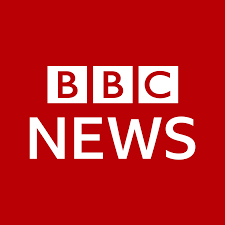What may come as a surprise is that a company known first as an internet gateway is the source of more hours of television viewing than any other provider.
If you have a clear memory of life before 2000 you might expect that television is still about networks, 13 week “seasons” of comedies and dramas, and any number of television “specials,” usually built around a singer or a beloved comedy performer. But that also dates those of us who think in terms of the programming appearing on the standard over-the-air VHF channels 2 through 13.
A lot has changed in the television universe. Most dramatically, top programs have migrated to platforms that have nothing to do with the original idea of “broadcasting,” which means delivering a television signal to an antenna. Obviously, cable providers carry their own networks as well as those who still broadcast. And we now look for content that is mostly “on demand.” What may come as a surprise is that a company known first as a computer content platform is the source of more hours of television viewing than any other provider. This is according to Nielsen Research data. YouTube, a branch of Alphabet Inc., arose to the top from its origins in Google.

YouTube takes no single form or point of view. Each user sets the parameters in the algorithms for videos they may watch. My YouTube habits would in no way mirror yours, unless you like pipe organs in the United Kingdom or a bass guitarist with interesting videos on music theory.
The specificity of content the single most significant element of the platform. It has made it possible to search and find content that matches a viewer’s interests. Few of us studying the mass media in the 1970s could have imagined that “television” could be tailored to the quirkiest interests. It may be as close as we get to democratizing media. As Jacqueline Zote notes in Sprout Social, the average user spends 48 minutes a day watching YouTube. Younger men are a key demographic in the U.S. And if its possible, there are even more avid viewers in India. Ads appear if viewers use only the free service, but they are a bit less intrusive than on broadcast television. And, mostly, they won’t butcher an extended music performance.
Because there are both private as well as institutional sources of videos (i.e. a single English historian with interesting ideas, as well as legacy broadcasters like BBC News), viewers need to avoid the mistake of thinking of all videos as having equal veracity. Fools and fantasists often have an inflated view of their talents, and are often all too willing to display them. A viewer needs to choose sources and their motives carefully.
Not only is YouTube a redefinition of what television is, it is also a medium that thrives at least as much on small screens and computers as well as traditional home sets. Its an internet site, but now also a regular program source for television viewers. Maybe “television” is the wrong word since much of YouTube’s content originates on demand, and outside of the traditions and usual pathways used in professional entertainment. Anyone can upload a YouTube video or be a mobile user of the medium. The results range from the local elementary school showing part of its holiday pageant, to German public television with a full documentary on the free but nervous Baltic states bordering Russia. There is no shortage of individual content providers. In addition, public broadcasters and some news organizations release scores of fascinating programs that would be at home on Netflix. They represent the very tip of professionally produced content. At the other end of the spectrum, some YouTubers clearly have little talent for explaining or organizing material. But more than we might guess, many show evidence of mastering the rudiments of writing, lighting, sound, camera usage and editing. Producing a good video is a humbling experience that takes time and a degree of talent. We are usually not talking about 4K here. But neither are most YouTube videos going to look like your grandfather’s home movies. For example, Katie Steckly offers a primer for novices who want to start their own series. At last count she has around 300 subscribers.
Providers of content have good reason to complain if they expect their content will provide a significant revenue stream. Even though there are 100 million paying subscribers, it’s hard to get enough views to make money on YouTube. Even a thousand hits on a person’s YouTube site will only make enough cash to buy lunch. On the other hand, opening up video production to nearly any source has lead to some surprisingly good offerings.
On the downside, a universe of discourse nearly as broad as the population means that a lot of misinformation, anti-social content, and other forms of video mischief are sometimes left on the site.
As boomer undergraduates studying media, we thought of the three primary networks as the largest of the American mass media. Even throw away content got huge audiences. We were pretty sure print would be the pathway used by thinkers and innovators to reach audiences with very specific interests. Now the advent of video has turned that world upside down. The best of independent content providers can almost match the slick offerings of a network. Traditional broadcasting and most on-demand platforms—including Google—exist to make money; but YouTube videos are ubiquitous because content providers usually have a strong appetite for the subject that they want to share.




